#WordPress Ecommerce Plugins
Explore tagged Tumblr posts
Text
Why Is WordPress Development So Popular?
In this blog, we share the top website development company in India and also provide detailed information about why WordPress development so popular? it is user-friendly, cost-effective, customizable websites, SEO friendly, and also you can add plugins to increase functionality. If you want to create a WordPress website contact the best WordPress development company in Rajkot today!

#website development company in india#wordpress development company in rajkot#WordPress development#SEO-friendly#SEO friendly plugins#wordpress ecommerce plugins
2 notes
·
View notes
Text
Top Best WordPress eCommerce Plugins (and Add-ons) for 2024
Starting an online store is easier than ever. With countless options, from diverse product types to flexible business models—eCommerce has opened up significantly. And WordPress, with its powerful features and extensive plugin library, makes the journey even simpler. But where should you begin? Here’s a curated list of the top WordPress eCommerce plugins and add-ons to help launch your online…
0 notes
Text
Boost Sales with Top 5 WordPress Plugins for Ecommerce
Introduction to WordPress Ecommerce Plugins
In the fast-paced world of online retail, having the right tools can make all the difference. To stay ahead, it's crucial to use the best ecommerce plugins for WordPress. These powerful plugins for WordPress not only enhance the functionality of your store but also provide a seamless shopping experience for your customers. To optimise your site for better performance or add new features to drive sales, the best ecommerce plugin for WordPress can help you achieve your goals.
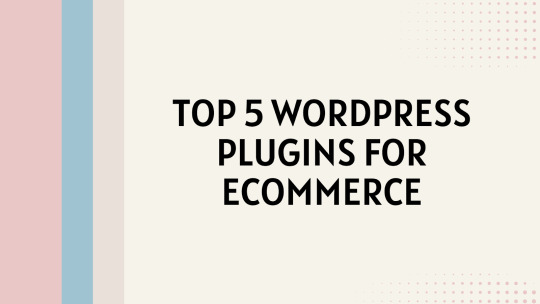
WordPress has emerged as one of the most popular platforms for building websites, thanks to its flexibility, ease of use, and extensive range of plugins. For e-commerce, these plugins are particularly valuable as they can add significant functionality to your store, from payment gateways and inventory management to customer reviews and SEO optimization. The right plugins can streamline your operations, improve customer satisfaction, and ultimately boost sales.
1. Yoast SEO: Optimize for Search Engines
Why Yoast SEO?
Search engine optimization (SEO) is crucial for driving organic traffic to your online store. Yoast SEO is one of the most popular WordPress plugins, trusted by millions of websites to improve their search engine rankings. It offers a comprehensive suite of tools to optimise your site’s content, meta descriptions, keywords, and more.
Key Features
Content Analysis: Yoast SEO provides real-time analysis of your content, offering suggestions to improve readability and SEO. This ensures that your content is both user-friendly and search engine-friendly.
XML Sitemaps: The plugin automatically generates XML sitemaps, making it easier for search engines to crawl your site.
Meta Tags and Descriptions: Easily edit meta tags and descriptions to ensure your pages have optimised and compelling summaries that attract clicks.
Breadcrumbs: Improve site navigation with breadcrumbs, which enhance the user experience and SEO.
2. WooCommerce: Power Your Online Store
Why WooCommerce?
WooCommerce is the most popular eCommerce plugin for WordPress, offering a flexible and robust platform to sell anything, from physical products to digital downloads. It’s highly customizable, with a plethora of extensions to cater to various business needs.
Key Features
Product Management: Add, edit, and manage products with ease. WooCommerce supports various product types, including simple, grouped, external/affiliate, and variable products.
Payment Gateways: Integrates seamlessly with major payment gateways like PayPal, Stripe, and more, ensuring secure and smooth transactions.
Shipping Options: Configure shipping methods, including free shipping, flat rates, and real-time calculations.
Inventory Management: Keep track of stock levels, manage backorders, and get notifications for low-stock items.
Analytics and Reporting: Access detailed reports on sales, refunds, coupons, and more to make informed business decisions.
3. Contact Form 7: Enhance Customer Communication
Why Contact Form 7?
Effective communication is key to building trust and ensuring customer satisfaction. Contact Form 7 is a versatile and easy-to-use plugin that allows you to create and manage multiple contact forms on your site.
Key Features
Form Customization: Create and customise contact forms using simple markup. Add various form fields, including text input, radio buttons, checkboxes, and more.
Spam Protection: Protect your forms from spam with CAPTCHA and Akismet integration.
Email Integration: Receive form submissions directly to your email inbox, ensuring you never miss a customer inquiry.
AJAX Submission: Enable smooth form submission without reloading the page, enhancing the user experience.
4. Jetpack: Secure and Speed Up Your Site
Why Jetpack?
Jetpack is an all-in-one plugin that offers a suite of tools to enhance your site’s performance, security, and user engagement. Developed by Automattic, the same team behind WordPress.com, Jetpack is a must-have for any serious eCommerce site.
Key Features
Security: Protect your site with features like real-time backups, malware scanning, and brute force attack protection.
Performance: Speed up your site with content delivery network (CDN) support, image optimization, and lazy loading.
Marketing: Enhance your marketing efforts with social media integration, automated social sharing, and site statistics.
Customization: Customize your site with additional widgets, galleries, and contact forms.
5. OptinMonster: Convert Visitors into Customers
Why OptinMonster?
OptinMonster is a powerful lead generation plugin that helps you convert visitors into customers. It offers a variety of tools to create high-converting optin forms, pop ups, and campaigns tailored to your audience.
Key Features
DragandDrop Builder: Create stunning optin forms and popups with a user-friendly drag and drop builder.
Targeting Options: Use advanced targeting options like page-level targeting, geolocation targeting, and exit-intent technology to reach the right audience at the right time.
A/B Testing: Test different versions of your campaigns to see which one performs better, optimising your conversion rates.
Analytics: Access detailed analytics to track the performance of your campaigns and make data-driven decisions.
How to Choose the Best ECommerce Plugin for Your WordPress Site
Selecting the best e-commerce plugin for WordPress depends on your specific business needs. Here are some factors to consider:
Types of Products: Determine whether you are selling physical goods, digital products, or services. Some plugins, like Easy Digital Downloads, are better suited for digital products, while others, like WooCommerce, handle a mix of product types.
Budget: Consider your budget for purchasing premium plugins or addons. While some plugins are free, others may require a subscription or one-time payment for advanced features.
Scalability: Choose a plugin that can grow with your business. If you plan to expand your product range or scale up operations, ensure the plugin can handle increased traffic and transactions.
Ease of Use: Look for plugins with user-friendly interfaces and good customer support. This is especially important if you are new to e-commerce or WordPress.
Integration: Check if the plugin integrates well with your existing tools and platforms, such as payment gateways, email marketing services, and social media channels.
Incorporating the best ecommerce plugins for WordPress into your online store can provide immense value and significantly boost your sales. Whether you’re selling physical goods, digital products, or services, these plugins offer the functionality, efficiency, and optimization needed to enhance your business operations and improve customer satisfaction.
By selecting and implementing the right plugins, you can transform your WordPress site into a powerful e-commerce platform. Evaluate your business needs, consider the features and benefits of each plugin, and choose the ones that align best with your goals. With the right tools at your disposal, your online store will be well equipped to thrive in the competitive e-commerce landscape.
Ready to take your eCommerce business to the next level? Don't let your website blend into the crowd. Empower your online store with WordPress plugins and watch your sales soar. Click here to start your journey to increased sales and customer satisfaction!
0 notes
Text
🔖Mark your calendars! 🗓️ The game-changing "𝐃𝐨𝐮𝐛𝐥𝐞 𝐎𝐫𝐝𝐞𝐫 𝐏𝐥𝐮𝐬" addon for 𝐖𝐨𝐰𝐑𝐞𝐯𝐞𝐧𝐮𝐞 is arriving on January 14! 💡 More orders, more revenue—get ready!
The game-changing "𝐃𝐨𝐮𝐛𝐥𝐞 𝐎𝐫𝐝𝐞𝐫 𝐏𝐥𝐮𝐬" addon for 𝐖𝐨𝐰𝐑𝐞𝐯𝐞𝐧𝐮𝐞 is arriving
2 notes
·
View notes
Text
7 Must-Have WordPress Plugins for 2025
7 Essential WordPress Plugins I Always Install (2025 Edition)
Looking to enhance your WordPress site? Here are the 7 must-have plugins I recommend for 2025:
Rank Math SEO – Effortless SEO optimization.
WP Rocket – Boost your site speed with caching.
Elementor Pro – Easily design stunning pages.
WPForms – Create interactive forms to engage visitors.
Akismet Anti-Spam – Keep spam at bay.
UpdraftPlus – Secure and back up your data.
WooCommerce – Build and manage online stores seamlessly.
These plugins will supercharge your site’s performance, security, and functionality!
Read more: 7 Essential WordPress Plugins

#WordPress#WordPress Plugins#Web Design#SEO#Website Optimization#Ecommerce#Blogging Tools#Online Business#Website Security#2025 Tech
2 notes
·
View notes
Text
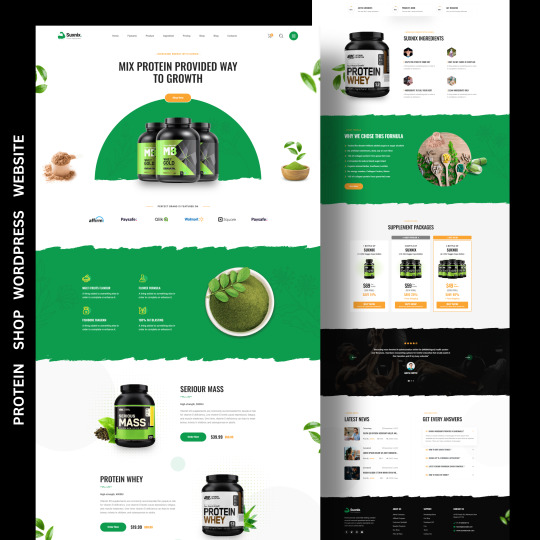

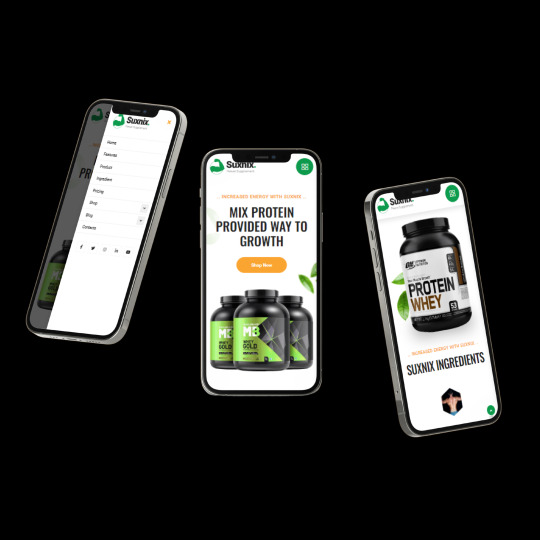


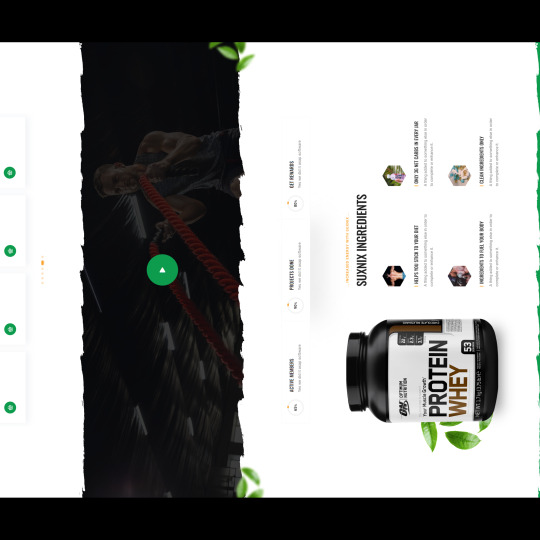
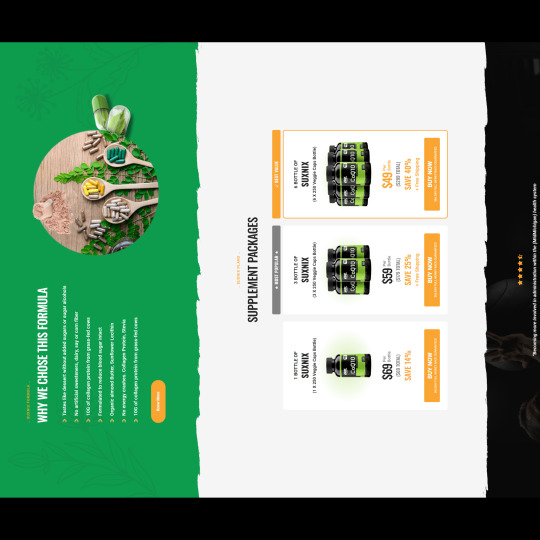


PROTEIN SHOP WordPress WEBSITE Follow @ppmsourav@pixelparkmedia
Designed by : https://shorturl.at/byBJ3 Check out their incredible work on this link ☝🏻
➡ DM for professional WordPress website . . . . . . .
#website#wordpress#wordpress themes#webdevelopment#web design#seo#web developers#wordpress development#website optimization#wordpress web design#wordpress website#wordpress plugins#ecommerce website development#web development#website design#website traffic#website development#website seo#software#digital marketing
3 notes
·
View notes
Text
#best business theme wordpress#consulting business wordpress theme#business#marketing#management#paid wordpress themes#premium wordpress themes#wordpress premium themes#premium wordpress theme#education & online course wordpress theme#app landing wordpress theme#ecommerce#wordpress plugins#online learning wordpress theme#education wordpress theme#entrepreneur#branding#best wordpress theme for medical website#website#webdesign#webdevelopment#website speed optimization#development#software#php
3 notes
·
View notes
Text
Maximize your eCommerce success in 2023 with these essential KPIs. Check out our latest blog post to learn more! 💻🛍️📈
#eCommerce#KPIs#OnlineBusiness#DigitalMarketing#woocommerce#wordpress#woocommercestore#digitalproducts#plugins#digitalproduct#ecommercestore
2 notes
·
View notes
Text
#Website Development Company#Website Development Service#Custom Website Development Service#WordPress Plugin Development Service#WordPress Theme Development Service#PHP Website Development Service#eCommerce Website Development Service#noida#nxlogy
0 notes
Text
WordPress Website Theme Ideas: Up-to-Date Strategies to Increase eCommerce Sales

Introduction
When it comes to running an online store, your WordPress website theme is more than just a design element, it's a powerful tool that can help boost your eCommerce sales. If you choose the right theme and optimize it correctly, it can make a huge difference in user experience, site performance, and even SEO rankings. In this article, we’ll explore the best WordPress theme ideas and strategies you can use to create an eCommerce website that not only looks good but converts visitors into loyal customers. Whether you're working with WordPress website development services or planning a DIY redesign, these tips will help you maximize your store’s potential.
1. Go for a Mobile-Responsive Theme
Today, a large number of people shop on their mobile devices. If your website isn't mobile-friendly, you risk losing out on sales. A responsive WordPress theme automatically adjusts to fit any screen size, ensuring a smooth browsing experience across devices.
When you hire WordPress website development services, make sure they provide themes that are optimized for mobile devices. This small tweak can boost your website’s conversion rates and improve your SEO ranking, helping more potential customers find your store.
2. Speed Matters – Choose a Fast-Loading Theme
Page speed is crucial for any eCommerce site. Studies show that even a delay of a few seconds in page loading can result in lost sales. Choose a lightweight WordPress theme that’s optimized for speed.
If you’re working with a WordPress development company, ask them to help optimize your site’s performance. This includes reducing the size of images, enabling caching, and using fast-loading themes that ensure your customers don’t have to wait to make a purchase.
3. Clear and Easy-to-Find CTA Buttons
Your website should clearly guide visitors toward making a purchase. Adding prominent Call-to-Action (CTA) buttons like "Add to Cart" or "Buy Now" is crucial. These buttons should stand out and be placed where they’re easy to find.
With WordPress website development services, you can customize CTA buttons that match your store’s theme while standing out to customers. Make sure these buttons appear on product pages, your homepage, and throughout the shopping journey.
4. Search Functionality Is Key
An efficient search bar helps customers quickly find what they’re looking for. A great search feature lets users filter by categories like size, color, or price, making shopping easier.
If you choose to work with WordPress plugin development services, you can integrate advanced search features that enhance the user experience and make browsing smoother, leading to more conversions.
5. High-Quality Product Images
Since customers can’t physically touch or try your products, high-quality images are essential for online shopping. A WordPress theme that showcases product images well will help make your store more appealing and encourage purchases.
Ensure that your product images load quickly without sacrificing quality. If you're working with WordPress development solutions, they can help set up galleries or sliders that show off your products from different angles.
6. Secure Payment Options
Security is a top concern for customers shopping online. Ensure your WordPress theme is compatible with secure payment gateways like PayPal, Stripe, and credit card processors. This will not only protect your customers but also boost your store's credibility.
With WordPress website development services, your team can integrate secure payment options that make the checkout process simple and trustworthy for your customers.
7. Customer Reviews and Ratings
People trust the opinions of others. Allowing customers to leave reviews and ratings on your product pages can greatly influence new buyers. A WordPress theme that supports reviews and testimonials can boost customer confidence and increase sales.
Make sure your WordPress development services include integrating a review system that displays customer feedback clearly on product pages.
8. Social Media Integration
Social media is a powerful tool for eCommerce businesses. By integrating social sharing buttons into your WordPress theme, you give customers an easy way to share your products on platforms like Facebook, Instagram, and Pinterest.
This can help spread the word about your products, bringing more visitors to your site. If you're using WordPress web development services, they can easily integrate social media buttons and feeds directly into your theme.
9. SEO-Friendly Theme
For your website to rank well on Google and attract more organic traffic, you need a theme that’s optimized for SEO. An SEO-friendly WordPress theme will make it easier for search engines to crawl your site and improve your ranking.
If you’re using WordPress website development services, make sure your theme follows SEO best practices, including clean code, fast loading times, and optimized images.
10. Easy Navigation
A simple, clear navigation menu is essential for a smooth user experience. Visitors should be able to find their way around your site with ease, whether they’re browsing products, checking out, or reading blog posts.
If you’re working with a custom WordPress development company, they can help you create a navigation menu that’s simple, intuitive, and designed to guide customers to the products they’re looking for.
Conclusion
Your WordPress website theme is more than just a visual design, it’s a vital part of your eCommerce strategy. By focusing on elements like mobile optimization, fast loading speeds, clear CTAs, and SEO, you can create a website that not only attracts visitors but converts them into paying customers. Whether you're building your site from scratch or working with WordPress website development services, the right theme can make all the difference in increasing your eCommerce sales.
By implementing these simple yet powerful strategies, you’ll be on your way to creating an online store that’s both user-friendly and high-converting.
#WordPress Website Development Services#eCommerce WordPress Themes#WordPress Theme Ideas#WordPress Development Solutions#SEO for WordPress Websites#WordPress Website Optimization#Custom WordPress Development Services#Increase eCommerce Sales#WordPress Plugin Development
0 notes
Text
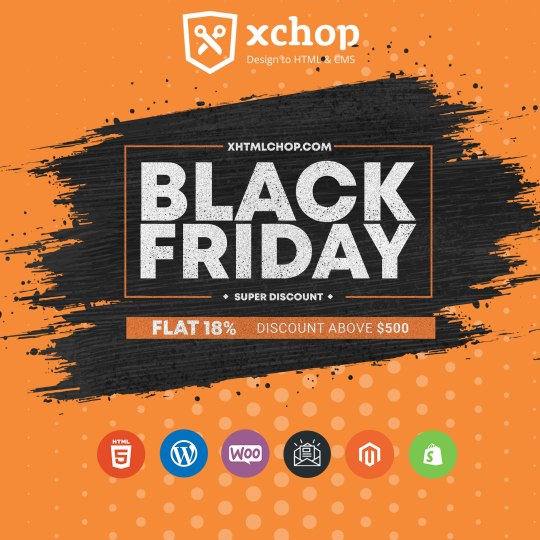
Get ready for the biggest savings of the year with XHTMLCHOP! We're offering an 18% discount on all new orders. Whether you need PSD to HTML, WordPress, Shopify, or any other conversion service, now is the perfect time to get started. Use Coupon Code: BlackF24 Don't miss out on this incredible deal! Visit our website and place your order today. Offer valid for a limited time only.
Visit us: https://www.xhtmlchop.com
#web#webdesign#figma to html#joomla#figma to magento#figma to wordpress#magento#website#webdevelopment#web graphics#wordpressdesign#psd to wordpress#wordpress#wordpress plugins#html#shopify development company#shopify#ecommerce#online store#online businesses#dropshipping
1 note
·
View note
Text
Cost to Build E-commerce Website in India
1. Introduction to E-commerce Website Costs in India
As e-commerce continues to transform retail in India, understanding the cost dynamics of creating an e-commerce website becomes crucial. Building a successful e-commerce site requires thoughtful investment across various elements, from hosting and design to marketing and maintenance. For those exploring this venture, knowing where and how much to invest can make a huge difference.
2. Why E-commerce is Booming in India
India’s e-commerce landscape has experienced exponential growth, driven by increased internet penetration, affordable smartphones, and changing shopping behaviors. People now value the convenience of online shopping, and businesses have adapted by expanding their digital presence. This surge underscores the importance of crafting an e-commerce platform that caters to a growing online audience.
3. Factors Influencing the Cost of an E-commerce Website
Platform Choice: Custom vs. CMS
The choice between a custom-built platform and a Content Management System (CMS) like Shopify, WooCommerce, or Magento directly impacts costs. Custom platforms offer tailored experiences but come at a higher cost, whereas CMS options provide affordable and flexible solutions.
Hosting: Shared, Dedicated, and Cloud Options
Hosting expenses vary based on whether you choose shared hosting, dedicated servers, or cloud hosting. Each has different levels of scalability, speed, and reliability. Shared hosting is cost-effective but may not support high traffic, while dedicated and cloud hosting provide enhanced performance for higher fees.
Domain Costs and Renewal Rates
The domain name, essentially your website’s address, requires registration fees, typically renewed annually. Premium domain names are more costly but can offer branding advantages, while standard domain names are more budget-friendly.
4. Understanding the Basic Website Development Costs
Core development involves setting up the site’s structure, implementing necessary functionality, and ensuring it performs optimally. Basic development costs can vary significantly depending on the complexity and functionality required.
5. Front-end Development: Bringing the User Interface to Life
Front-end development focuses on creating an attractive, user-friendly interface. This step includes designing visuals, arranging layouts, and ensuring a smooth user experience across devices, making it a key factor in engaging customers.
6. Back-end Development: Ensuring a Robust Infrastructure
Back-end development supports the functionality behind the scenes, enabling features like search, filtering, and payment processing. Investing in quality back-end development ensures your site runs smoothly and handles customer demands efficiently.
7. Essential Features for an E-commerce Website
Product Catalog and Management System
A structured product catalog with categories, filters, and descriptions is essential for ease of navigation, impacting overall usability and customer experience.
Shopping Cart and Checkout Process
A streamlined checkout process, equipped with cart functionality, ensures a smoother journey from product selection to purchase, reducing cart abandonment.
Secure Payment Gateway Integration
Integrating a payment gateway allows customers to make purchases securely. Payment gateways like Razorpay, Paytm, and others add costs but are critical for building trust.
8. Importance of Mobile Responsiveness in E-commerce
Mobile responsiveness allows your site to adapt to various screen sizes, ensuring a seamless shopping experience. A mobile-responsive design often involves additional costs but is indispensable in today’s mobile-first market.
9. Cost of Implementing a Custom Design
Custom design provides a unique brand identity but comes at a premium. It involves hiring skilled designers to create a look and feel that resonates with your brand and audience.
10. Integrating Third-Party Tools and Plugins
Third-party integrations enhance functionality, such as live chat, analytics, and inventory management. Although these add to development costs, they significantly improve the user experience.
11. Importance of SSL Certification and Security Features
An SSL certificate ensures that your website is secure, especially during transactions. E-commerce websites are vulnerable to cyber threats, making security investments essential.
12. Cost of Testing and Quality Assurance
Testing is essential to detect and fix bugs before launch. Quality assurance (QA) testing ensures that your site functions smoothly, with reliable performance across different devices and browsers.
13. E-commerce SEO and Digital Marketing Costs
On-page SEO
On-page SEO optimizes website elements like titles, tags, and URLs to improve search engine rankings. Good SEO attracts organic traffic and requires investment in keyword research, optimization, and monitoring.
Content Marketing and Blogging
A blog can drive traffic by offering valuable information and insights, which engage customers. Content marketing helps boost SEO and requires investment in content creation and promotion.
Social Media Marketing
Social media channels like Facebook and Instagram help build brand presence. While initially inexpensive, effective social media strategies often require paid ads and regular content creation.
14. Maintenance and Support: The Ongoing Costs
E-commerce websites require regular updates, security checks, and support services to remain operational and safe. Ongoing maintenance can help address issues promptly and keep the site in optimal condition.
15. Calculating the Cost for Various Sizes of E-commerce Sites
Small-scale E-commerce Sites
Small-scale sites often require minimal features, keeping costs relatively low. These are ideal for startups or small businesses with limited budgets.
Medium-sized E-commerce Sites
Medium-sized websites involve additional features, larger product catalogs, and possibly custom designs, increasing the budget.
Large-scale or Enterprise E-commerce Sites
Large e-commerce sites are built for high traffic and extensive functionality, requiring substantial investments for scalability, customizations, and powerful hosting solutions.
16. Choosing a Freelancer vs. Development Agency
Freelancers offer cost-effective solutions but may lack resources for large projects, while agencies provide comprehensive services and robust support at a higher cost.
17. How Location in India Affects Development Costs
The cost of hiring developers in India varies by region. Major tech hubs like Bengaluru or Mumbai may charge more, while other regions offer competitive pricing.
18. Sample Cost Breakdown for an E-commerce Website in India
To provide a clear picture, a sample cost breakdown includes expenses for development, hosting, marketing, and more, giving potential clients a realistic expectation of the total investment.
19. Hidden Costs to Consider
Beyond apparent expenses, hidden costs like license renewals, plugin updates, and unexpected troubleshooting can arise. Accounting for these ensures better financial planning.
20. Conclusion: Budgeting Smartly for an E-commerce Website in India
Creating an e-commerce website in India requires a strategic balance of essential features and realistic budgeting. By understanding the costs and planning ahead, businesses can build a site that meets customer needs and achieves business goals.
#ecommerce#strategy#e commerce solution bd#e commerce website#e commerce development#e commerce marketing#seo services#social media#cms development services#plugins#wordpress#webdesign#webdevelopment#magentodevelopment#ai#digital marketing
0 notes
Text
youtube
#WordPress#Blogging#Website#CMS#SEO#Plugins#Themes#Customization#Hosting#Security#Maintenance#SpeedOptimization#MobileFriendly#Ecommerce#Multilingual#Backup#Analytics#SocialMediaIntegration#UserManagement#Forms#Widgets#Shortcodes#Gutenberg#RESTAPI#Multisite#Performance#Accessibility#GDPRCompliance#SSL#CDN
0 notes
Text

📢'𝐃𝐨𝐮𝐛𝐥𝐞 𝐎𝐫𝐝𝐞𝐫 𝐏𝐥𝐮𝐬' 𝐢𝐬 𝐜𝐨𝐦𝐢𝐧𝐠 𝐭𝐨 𝐖𝐨𝐰𝐑𝐞𝐯𝐞𝐧𝐮𝐞!
🆕The feature works similarly to the 'double order' functionality you're used to working with, but we've 💪 expanded it!
🔔Stay tuned for more details!
2 notes
·
View notes
Text
6 Best WordPress Funnel Builder Plugins Used in 2024
Discover the 6 best WordPress funnel builder plugins of 2024 that can transform your site into a conversion powerhouse! 💪✨
From seamless integrations to user-friendly interfaces, these plugins have everything you need to optimize your sales process and skyrocket your revenue. 🌟
Whether you’re a newbie or a seasoned pro, there’s a tool here for you!
Don’t miss out on these game-changing resources that can elevate your marketing strategy and help you achieve your goals! 📈💰
More!
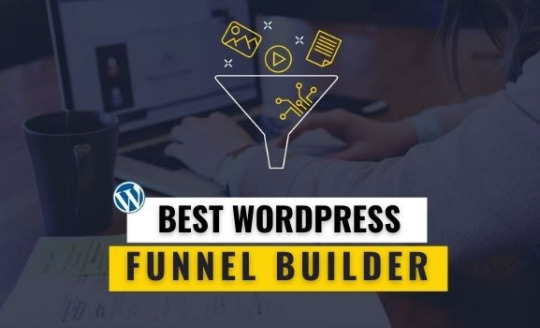
#WordPress#FunnelBuilder#DigitalMarketing#Plugins#OnlineBusiness#2024Trends#Conversions#Ecommerce#MarketingTools#salesfunnel#pagebuilderspro#landingpage#membershipfunnel#membershipsite#leadgeneration#affiliatemarketing#onlinemarketing
1 note
·
View note
Text
Bulk print of WooCommerce barcode : A Single Product and Multi Product : WooCommerce Plugin
The WooCommerce Barcode Generator plugin generates barcodes for WooCommerce websites. The plugin creates dynamic barcodes for all products and all orders. Besides, the order barcode is printed along with the order email. Barcodes are generated automatically as soon as the plugin is activated. Plugin page:…

View On WordPress
#barcode#barcode generator#barcodegenerator#barcodenumber#barcodes woocommerce#ecommerce#ecommercebarcode#mailbarcode#order#order barcodes for woocommerce#orderbarcode#plugin#plugin development#product#productbarcode#webbarcode#webdesign#websitedesign#WooCommerce#woocommerce barcode for woocommerce#woocommerce barcodes#woocommerce order barcode#woocommerce order barcodes#woocommerceorder#Wordpress#wordpresswebsite
1 note
·
View note